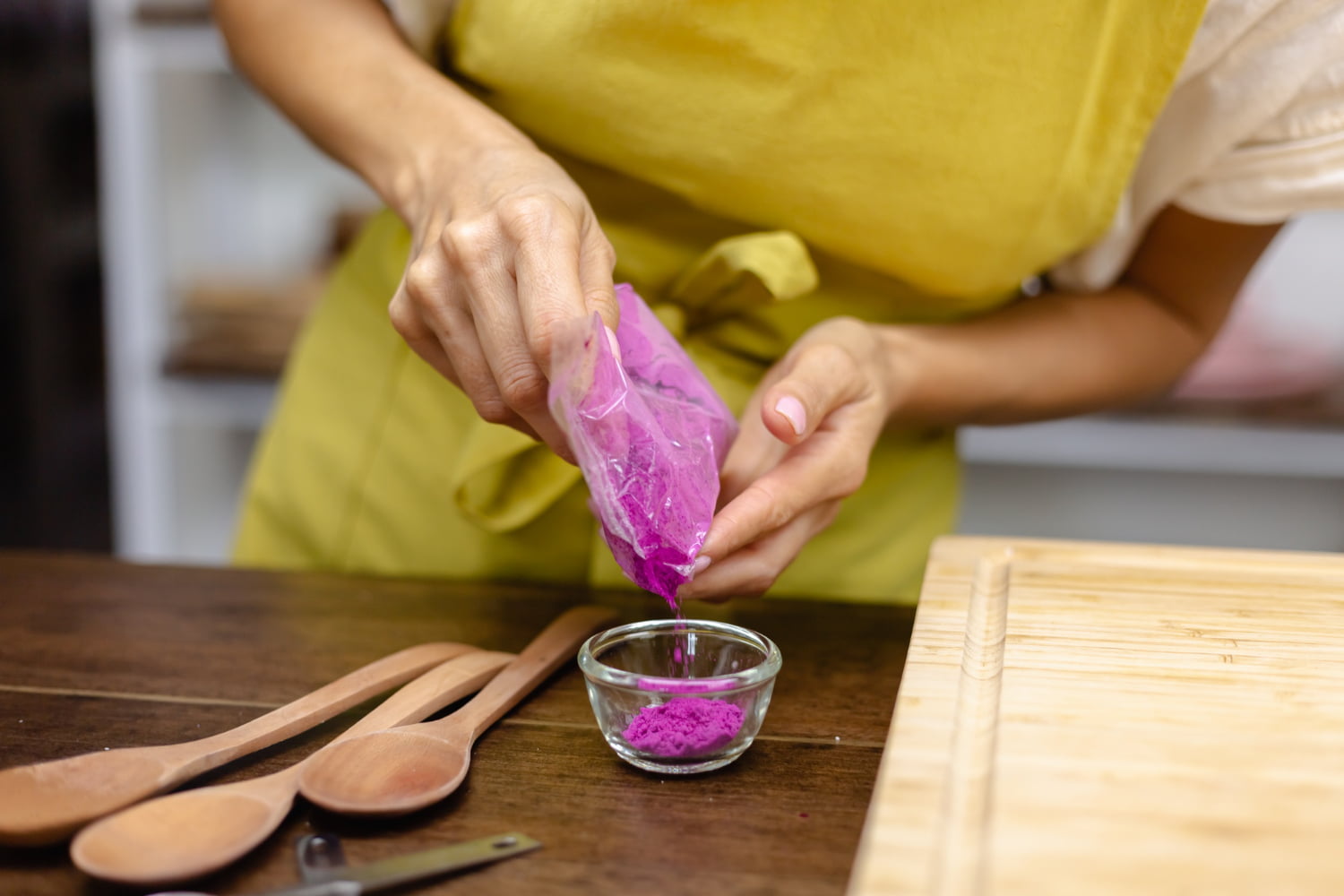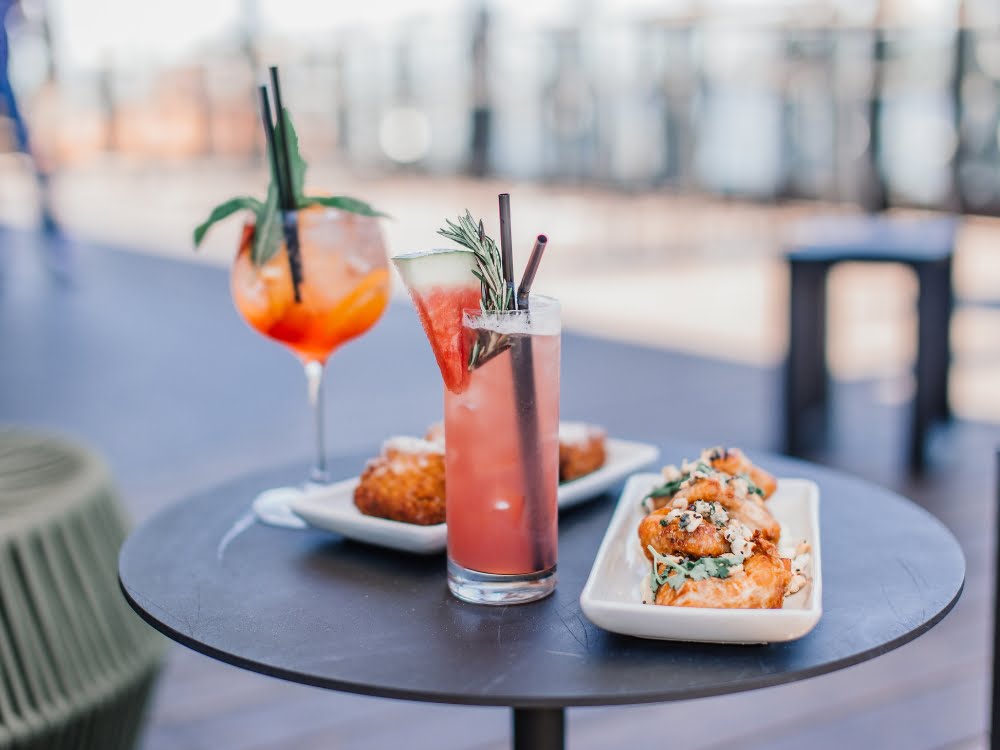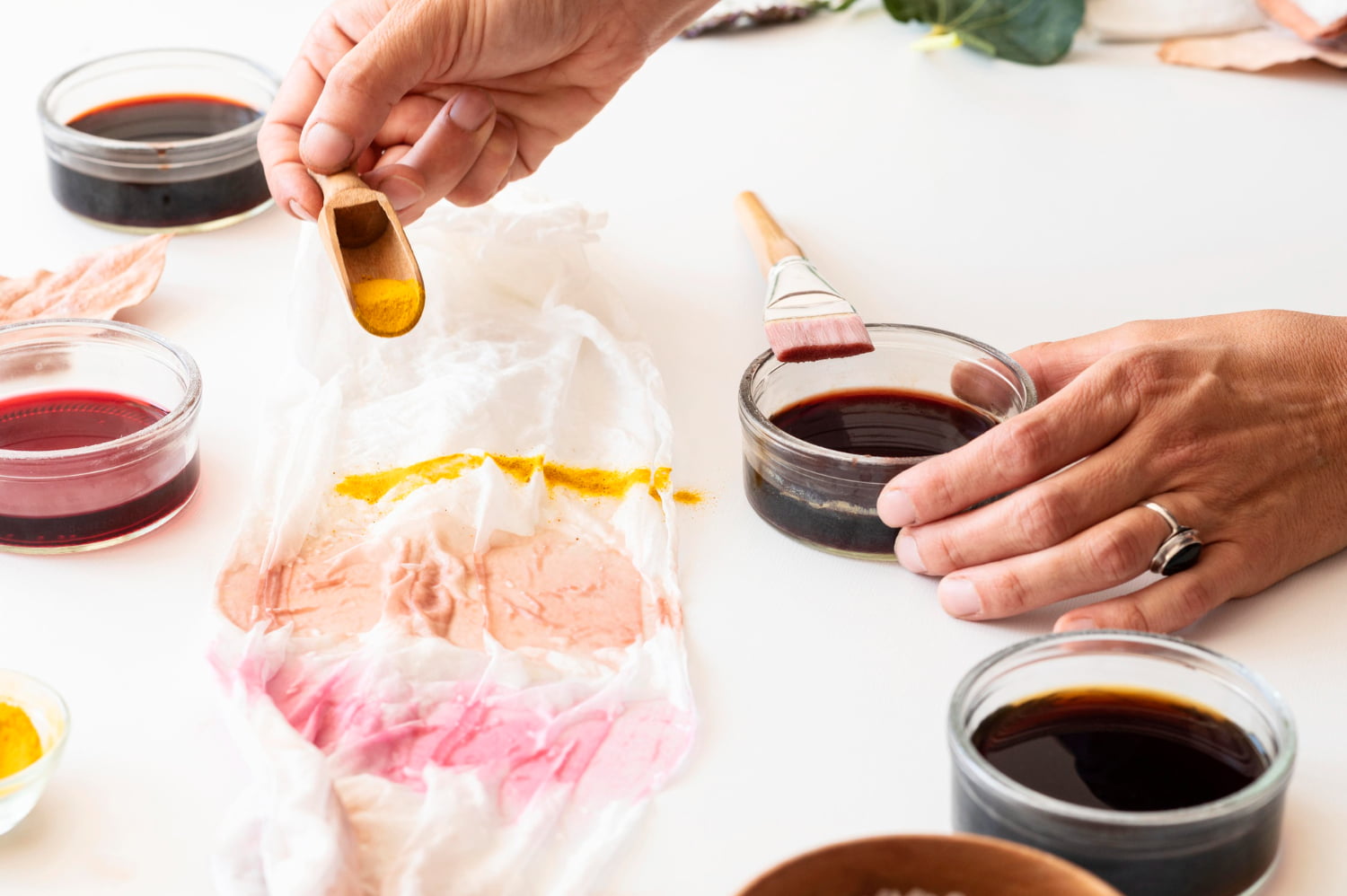How to make purple food coloring? Adding a burst of vibrant color to your culinary creations can elevate the dining experience from ordinary to extraordinary. If you find yourself in need of purple food coloring and want to avoid store-bought options, fear not! Creating your own purple food coloring is not only easy but also allows you to customize the shade using common kitchen ingredients. In this comprehensive guide, we’ll explore various methods to make vibrant purple hues for your next baking or cooking adventure.
1. Blue and Red Combo: The Basics of Color Mixing
Understanding color theory is the key to mastering the art of homemade food coloring. The most straightforward method involves combining blue and red food coloring. Start with a few drops of blue and gradually add red until you achieve the desired shade of purple. This method allows for precise control over the color intensity, making it ideal for a range of recipes.
2. Beet Juice Elixir: A Natural and Nutrient-Rich Option
How to make purple food coloring: For those seeking a natural and nutrient-rich alternative, beet juice is an excellent choice. Extract the juice from fresh beets and add it to your recipe, adjusting the quantity to achieve the desired intensity. Not only does this method create a beautiful purple hue, but it also brings a subtle earthy flavor, adding depth to your dishes. Beets are not just a source of color; they contribute valuable nutrients to your culinary creations.
3. Blueberry Bliss: Infusing Flavor and Color
Blueberries not only provide a burst of flavor but also contribute to a delightful purple food coloring. Mash fresh or frozen blueberries, then strain the juice. The resulting liquid can be added to various recipes, offering a pleasant berry essence along with the desired purple color. Blueberry puree adds not just color but a hint of sweetness and antioxidants, making it a health-conscious choice.
4. Blackberry Brilliance: Deep Tones and Rich Color
How to make purple food coloring: Similar to blueberries, blackberries can be harnessed for their deep tones and rich color. Mash the berries, strain the juice, and incorporate it into your dish. The intense pigmentation of blackberries produces a more profound purple, making it an ideal choice for desserts and baked goods. Additionally, blackberries bring their unique flavor profile, balancing sweetness and tartness in your culinary masterpiece.
5. Red Cabbage Magic: Unexpected Beauty from the Kitchen Garden
Red cabbage, an unexpected hero in the realm of food coloring, can produce a vibrant purple hue. Boil red cabbage leaves, strain the liquid, and use it to color your culinary creations. Adjust the quantity based on the desired color intensity. This method not only adds color but also introduces a unique touch of earthiness. Red cabbage provides a visual spectacle and a surprising twist of flavor, making it an intriguing choice for those seeking novelty.
6. Grape Goodness: A Sweet Twist to Purple Coloring
Harnessing the natural sweetness of grapes, especially from red or black varieties, provides another excellent option for purple food coloring. Extract the juice and use it sparingly to avoid overwhelming the dish with a grape flavor. This method is not only visually appealing but also adds a subtle fruity note. Grapes bring a delightful sweetness to your creations, enhancing the overall flavor profile of your dish.
7. Mixing with Care: Finding Your Unique Shade
How to make purple food coloring: For those who love to experiment, try mixing different methods to create your unique shade of purple. Combine blue and red with a touch of beet juice or enhance the color with a hint of blueberry and blackberry juices. This approach allows you to tailor the color to your liking, creating a signature hue for your culinary creations. Experimenting with different combinations provides an opportunity for creative expression in the kitchen, allowing you to craft a color that suits your personal taste and the theme of your dish.
8. Consider the Dish: Matching Color to Culinary Context
When choosing a method, consider the type of dish you’re preparing. Natural options like beet juice or blueberry puree might be better suited for desserts, while the blue and red combo works well for a variety of recipes, including savory dishes. Tailoring the coloring method to the specific context ensures a harmonious blend of flavor and appearance. The choice of food coloring should complement the overall sensory experience you aim to create with your culinary masterpiece.
9. Testing and Adjusting: Precision in Color Crafting – How to Make Purple Food Coloring
Always test your homemade purple food coloring in small quantities before adding it to the entire dish. This allows you to make adjustments to the color without compromising the overall flavor or appearance of the final product. Experimenting in controlled amounts ensures precision in color crafting. Adjusting the quantity of your homemade food coloring based on taste tests ensures that your dish is not only visually stunning but also perfectly balanced in terms of flavor.
10. Storage Tips: Keeping Color Fresh and Vivid
If you have leftover homemade purple food coloring, store it in an airtight container in the refrigerator. Be mindful of the expiration dates of natural ingredients like fruit juices to ensure the freshness of your coloring. Proper storage maintains the vividness of the color, ensuring it’s ready for your next culinary masterpiece. Investing in quality storage containers and labeling them with preparation dates ensures that your homemade food coloring retains its vibrancy and quality.
Frequently Asked Questions:
Q: Can I use frozen blueberries for making purple food coloring?
A: Yes, you can use either fresh or frozen blueberries. Thaw frozen blueberries before mashing and straining to extract the juice. Frozen blueberries retain their color and flavor, making them a convenient option year-round.
Q: Will beet juice alter the taste of my dishes significantly?
A: Beet juice may impart a mild earthy flavor, especially in large quantities. Adjust the amount based on your taste preferences and the specific dish you are preparing. It’s advisable to start with small quantities and gradually increase if desired.
Q: How much blue and red food coloring should I use for a vibrant purple shade?
A: Start with a few drops of blue food coloring and gradually add red until you achieve the desired color. It’s advisable to add colors incrementally to avoid overdoing it. Remember that the intensity of the color can vary based on the brand and concentration of the food coloring you use.
Q: Can I mix different fruit juices to create a unique purple shade?
A: Absolutely! Experimenting with various fruit juices allows you to customize the color. Just ensure you maintain a balance to avoid overpowering the dish with one particular flavor. Combining blueberry, blackberry, and grape juices, for example, can result in a complex and nuanced purple hue.
Q: How long can homemade purple food coloring be stored?
A: Store homemade purple food coloring in an airtight container in the refrigerator. It’s best to use it within a week to ensure freshness and vibrant color. Keep an eye on the expiration dates of natural ingredients like fruit juices, as they can affect the quality of your food coloring over time.
Delve into Alternative Pieces: How to Make Black with Food Coloring



